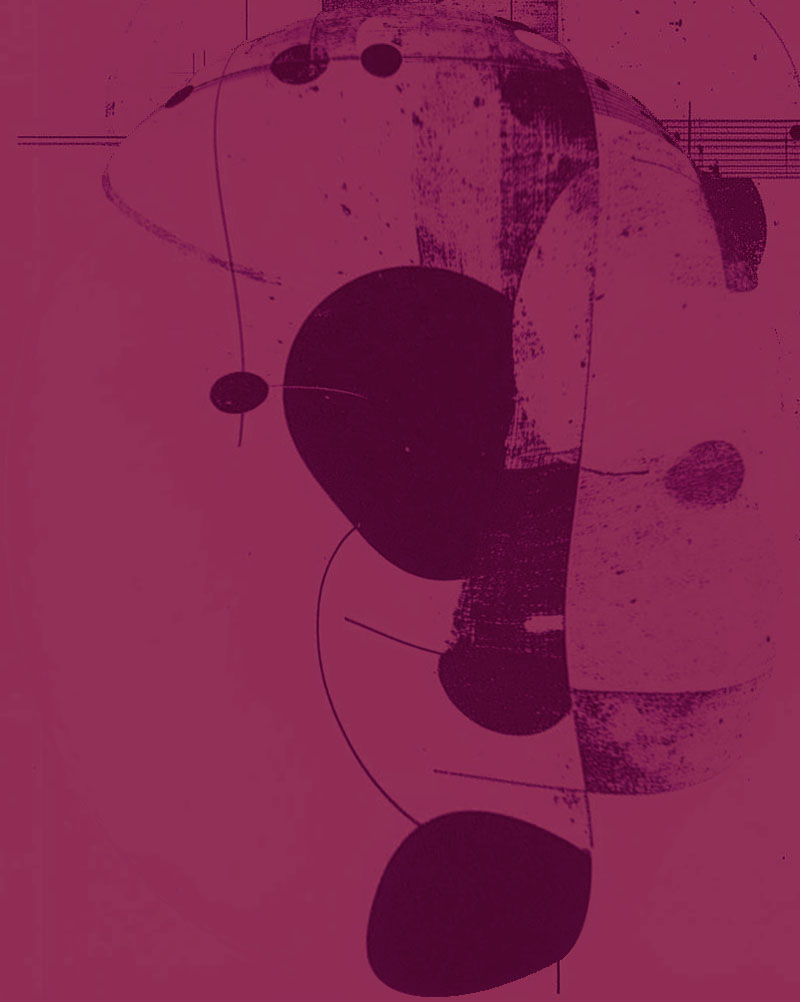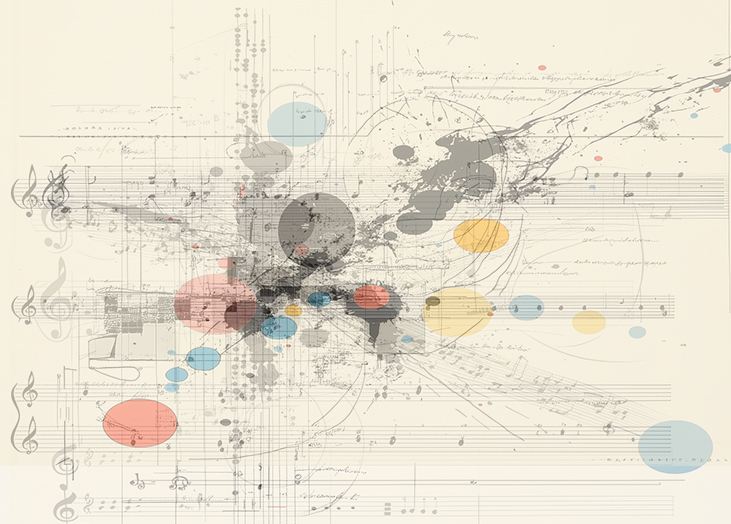
In July 2019 Modulisme was born, Bana Haffar and I contributing the very first 2 Sessions. It was very important that my first guest be a woman, and I’d so much like more Ladies to respond to my invitations, for Modulisme to offer more of a female presence… And fully document our Electronic Music community…
Over the years, I’ve heard it said that the platform offers so much information that the newcomer doesn’t know how to take it in, where to start, that there’s too much to read… A simple reply would be « take your time » because Modulisme wants to share information, give composers a voice and make sure they have the opportunity to be well presented. The fuller their message, the better off I am, so here it’s all about transmission, and of course it may take time to digest… For the better !!!
We are celebrating 5 years of activism and offering 1 112 exclusive works showcasing the importance of analog electronic music !
For this series I wanted to emphasize the alliance of acoustic and electronic with a collection of works showing that Modulisme isn’t dealing with Modular synthesis only and that what matters is the composition rather than the tools.
ACOUSTRONIQUE features music composed of sounds artificially created using the modular instrument, enriched with natural sounds (field recordings/voices) or acoustic material (instruments).
This is volume 7 which I chose to limit to 2 hours so as to keep it digest…
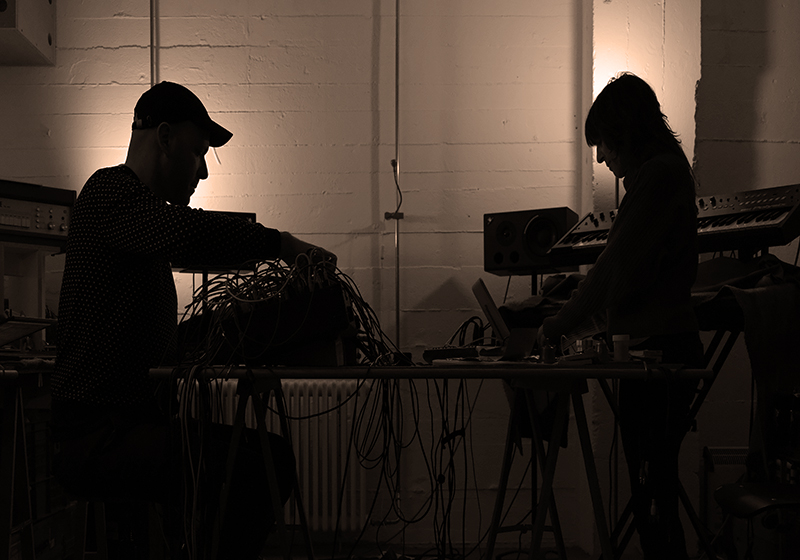
01. Andrea Parkins & Eliad Wagner – Thickets (11:47)
Andrea Parkins is a composer, sound artist, and electroacoustic performer who engages interactively with electronics as both material and process. Working with an array of sonic materials – amplified drawing tools, objects and surfaces; electronic feedback, custom-built software, and electronic and acoustic instruments – her work explores slippages and connections between the body, materiality, sound, site, and space. Parkins’ projects encompass electroacoustic composition and performance; spatial audio and intermedia installation; and sound for contemporary dance, experimental film and intermedia performance. She performs internationally a solo artist, and has collaborated with artists including Magda Mayas, Ute Wassermann, The Necks, George E. Lewis, Miya Masaoka, dance theatre artist Vera Mantero, interdisciplinary performers The Body Cartography Project, and filmmaker Abigail Child. Her work has been presented at the Whitney Museum of American Art, The Nordic Biennale of Contemporary Art (Norway), Experimental Intermedia (NYC), Kunsthalle Basel, Kunsthall Bergen, Music Unlimited (AU), FIMAV (QC), Musée d’Art Moderne et Contemporain (Strasbourg), NEXT (Bratislava), and many more. Parkins’ recordings are published by Important Records, Confront Recordings, Atavistic, Henceforth Records, Infrequent Seams, and Creative Sources. Her writing is published by Research Catalogue and Errant Sound. She has been an invited resident artist at Rauschenberg Residency (US), Elektronmusikstudion-EMS Stockholm, Q-02 Workspace for Experimental Music and Sound Art (Brussels), Harvestworks Digital Media Arts Center (US), and by Frei und Hanseastadt Hamburg Kulturbehoerde.
Eliad Wagner is a composer, performer, sound artist and lecturer, a classically trained musician, holding academic degrees in physics (BA) from the Hebrew University in Jerusalem (IL) and composition/music technology (Mmus) from the Utrecht academy of the arts (NL).
His musical activities explore the meeting point of composition and performance while addressing thoughts on the vocabulary of electronic music, autonomous processes, intention and attention in audio culture, and people’s natural relationship with technology.
In 2012 Wagner relocated to Berlin, where he quickly became an active member of the city’s experimental music scene as a performer of live electronic music (playing the modular synthesizer) as well as composing for small ensembles and installations. He is co-founder of and regularly contributing composer to the electro-acoustic ensemble ‘Circuit Training’.
Since 2015, He is the head of the Electronic Music Production and Performance degree programme at the Catalyst Institute for Creative Arts and Technology in Berlin- an international, diverse, genre-agnostic academic programme he has designed to train students in composition and performance of electronic music.
“Thickets” was born out of a long-term artistic research project that we developed, focusing on gesture as a foundation for musical composition and improvisation. Over the course of the project, we met often and conducted long sessions, during which we observed and discussed each other’s gestures as performers with our electroacoustic sound sources. We recorded hours of music and conversation, and “Thickets” was captured during one of the sessions. In our music we pay close attention to how we apply our embodied energies in order to create and influence the sounds with which we work. One of us (Eliad) plays the modular synthesizer, and the other (Andrea) works with amplified objects ( including stones, bits of paper, and shards of metal), small electronics, melodica and prerecorded samples — all of which are processed and played back in real time through Andrea’s custom-built software instrument .
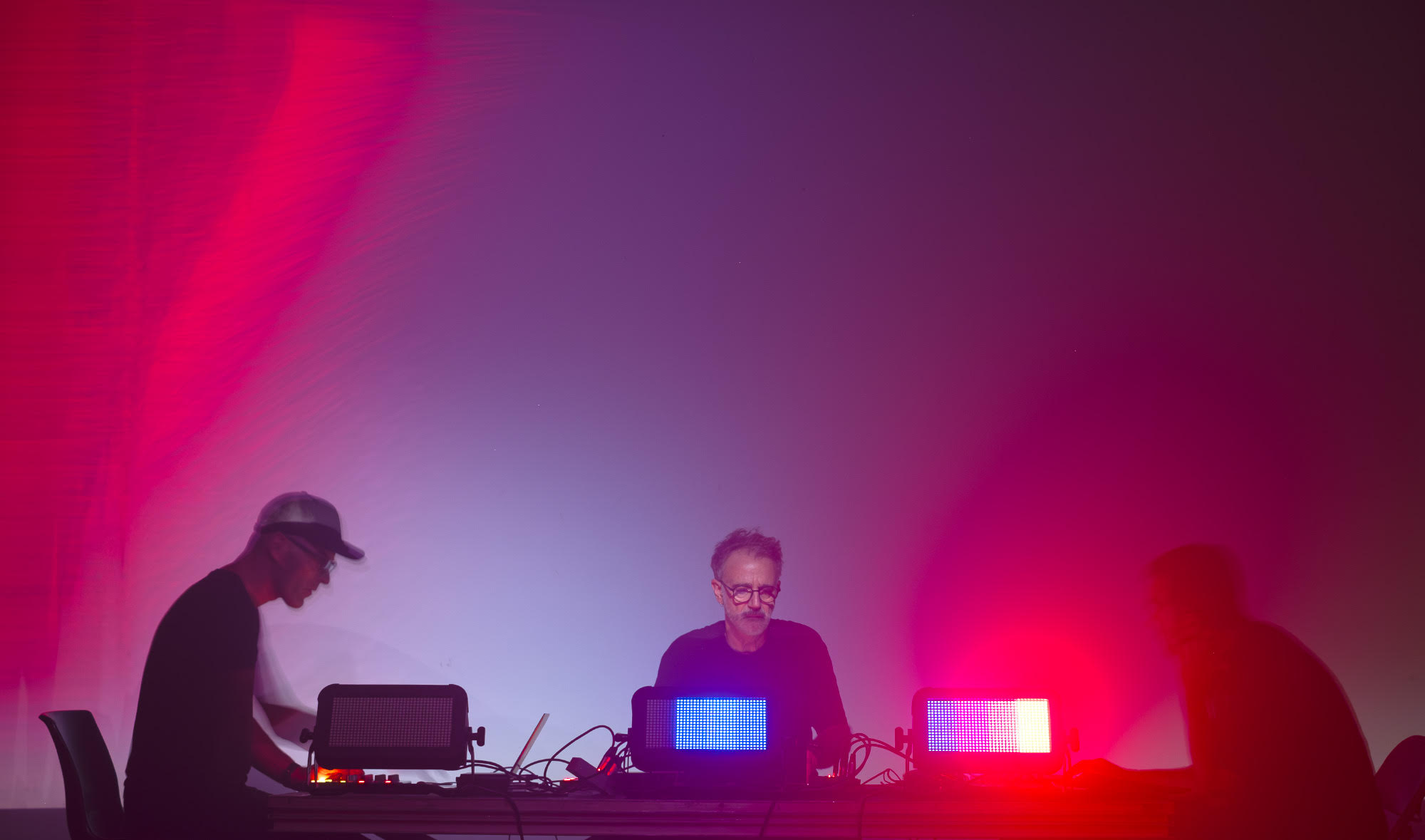
02. @c – LRJ2–NV24 (07:12)
Composed by Miguel Carvalhais & Pedro Tudela in Porto, 2024.
Pedro Tudela and Miguel Carvalhais collaborate as @c since 2000, having produced a long list of performances, releases, and installations. They regularly collaborate with other artists and collectives, in a practice marked by radical experimentation with computational sound. In 2003 Carvalhais and Tudela started Crónica, a label dedicated to experimental music and sound art.
LRJ2–NV24 is part of a broader suite of pieces collectively titled 30×n, a performance with visual artist Rodrigo Carvalho. 30×n was composed by developing a modular system of sonic, visual, and light elements that are articulated on stage in a collaboration between three performers and three computers — https://at-c.org/performances/30xn/ The concept for this performance started from revisiting sonic materials produced almost twenty years ago for the installation 30×1 — https://at-c.org/installations/30×1.php — a process that led us to blend sound objects created through processes of field recording, studio manipulation of objects and instruments, electronic instruments, synths, and computational generation. One of the many reasons why computers are so central to our practice is their capacity to absorve, mediate, and transform all sorts of sounds, and to allow us to work at vast scales (of timbre, frequency, time, etc.) 30×n is currently constituted by 9 modules.
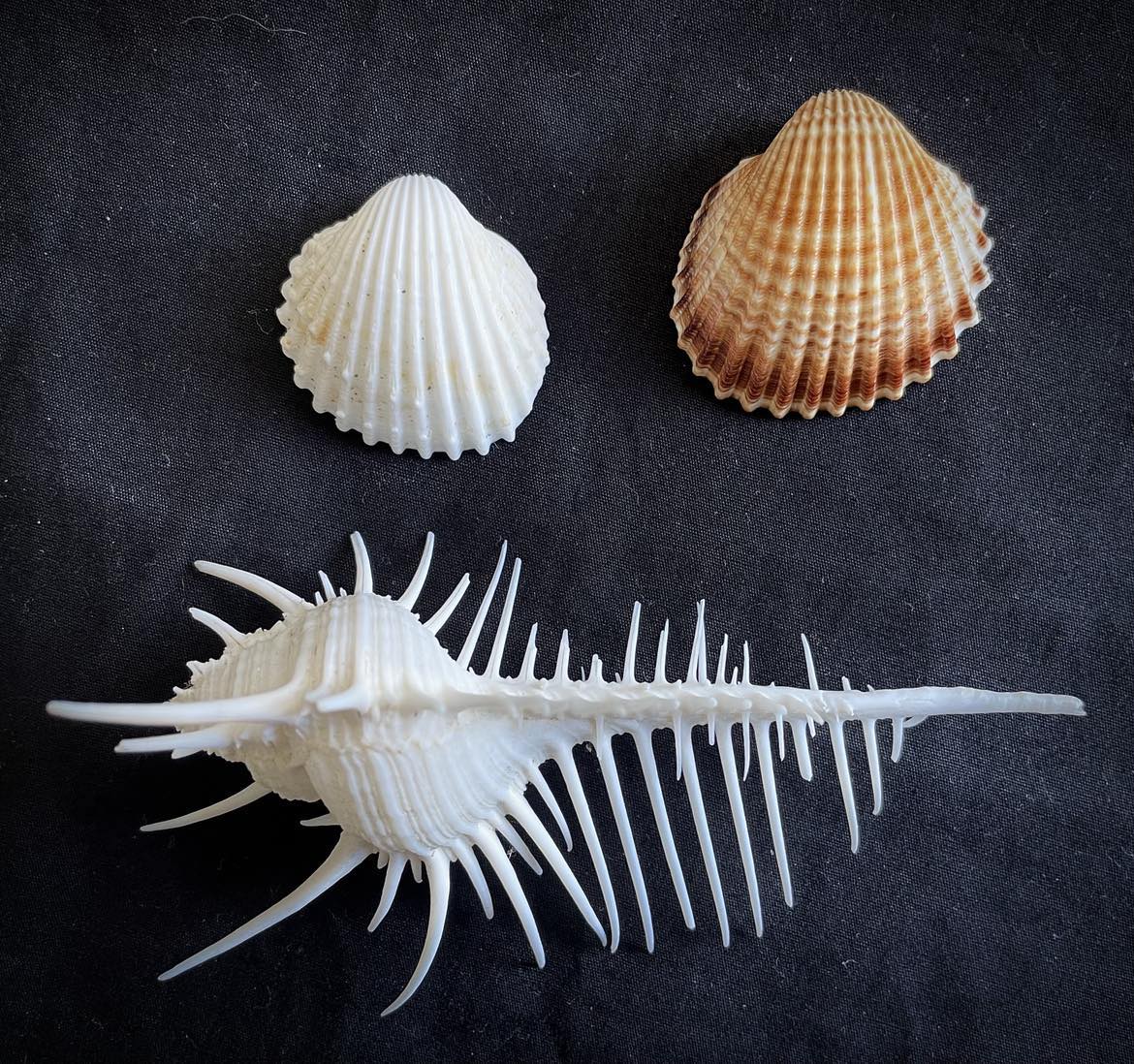
03. Philippe Festou – 5 Songes (08:57)
To date, Philippe Festou has written some 150 orchestral, chamber, vocal, operatic, electroacoustic and mixed works.
He maintains a relationship with improvisation, as he has done with jazz and free improvisation musicians, as well as with visual artists, with whom he has opened up multiple and innovative performative experiments.
A multi-instrumentalist, his “physical” approach to sound has led him to research as a student or collaborator in the fields of musique concrète, electronic music and singular languages with Michel Chion, Pascal Gobin, Danièle Ors-Hagen and Walter Thompson, integrating several types of writing in which the notion of gesture, orality and the graphic question within more conventional writing have a place of their own.
Artistic director of the Yin Ensemble, since 2004, and of the Vagues Sonores international festival of creative music in the south of France, he continues to push this approach further, affirming a “musical whole” (everything is music) encompassing, without hierarchy, ambient sounds, instrumental sounds, electronic sounds, concrete sounds and improvisation.
This piece marked a turning point in my approach to musical writing (both instrumental and with fixed sounds); it fits in with what I’m trying to elaborate on the concept of “kairotopia”: the idea is that every place of observation through listening is potentially musical, and that the composer is only there to reveal what already exists…
Kairophony, a subset of kairotopia, is a contemplative (through the observation of sounds) and/or active (through the production of sounds) approach.
It enables us to observe in a deep and subtle way.
It’s a reading of the world through sound, a “liber mundi” and an affirmation of our interaction with its existence.
It enables us to gain a finer understanding of biological, ecological and social relationships, to identify characteristics, signatures, cultural and spiritual axes, and to position ourselves at the heart of events. Through awareness and observation, the aim is to open up this invisible field of immaterial universes, considering that the world of sound provides us with information that is more subtle than it seems.
Since sound has a vibratory, invisible and mysterious nature, we can apprehend its phenomena through listening, which can be refined with regular training.
We can compare this sensitive approach with observing a “marketplace”. Each place where we find ourselves on the square can be defined by a framework determined by listening.
“Kairotopie” is a word that comes from the ancient Greek Kairos (the right moment) and Topos (the place).
It suggests a space and a time in which the protagonist immerses himself in an immersive way, against the current of a world of “ultra consumption” and profitability, what is proposed here is to be a real actor by his presence in a time dedicated to observation. In this way, we can experience sound events in moments that follow on from one another, overlap, interweave, appear, disappear, surprise or, on the contrary, fail to arrive…
Kairotopie offers a framework for a conscious relationship with the world of sound. It also involves the subjective part of us, addressing our unconscious, both individual and collective. It involves our sensory organs and the relationship between listeners and sound events in the same process of co-creation.
We could say that kairophony, the perceptive highlighting of a set of sound phenomena in a given place, encourages us to melt into them to capture their interdependence. Kairotopia thus provides a framework for observation; it is neither more nor less than a form of writing or posture that considers art as inseparable from life itself, and life itself as a work of art; in this way, it avoids dissociating the two.
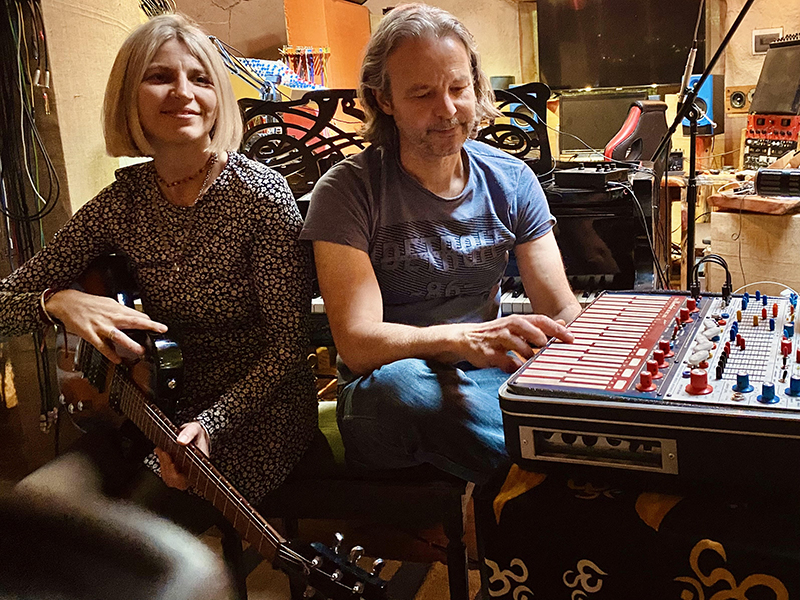
04. Josue Arias & Lali Marczyk – Airports (08:19)
Lali Marczyk, a musician of Polish origin, was born in Argentina in 1973, leaving the city to settle in the forests of Patagonia where she has lived for 26 years. Self-taught, she recreates the landscapes of the region in her music and experimental inquiry with piano, guitar, violin, cello and percussion.
Poet and writer currently developing the project “Sound Poets”, a fusion of Music and Poetry, together with the musician Josue Arias, uniting both arts in their nature of improvisation and live experimentation.”
Josue Arias is an eclectic artist and musician born in Madrid, Spain. He began to explore sound synthesis when he was only 9 years old using analog synthesizers. Before doing most of his career between playing in bands, sound engineering and composing for documentary and TV, he moved to south Patagonia in 2011. Built a recording studio in the middle of nature, and from there he split time between sound design, composing and experiment with all kind of acoustic instruments and modular synthesizers.
« Airports » was born as an improvisation with Lali Marczyk, in the context of the desire to co-create something together,
focusing on the connection with the present, sharing the sound journey more than on the purely musical. The instruments used for the song was not prepared:
we just went to the studio, each one of us picked one instrument and silently we begin to play
The combination of the timbres of the Buchla music easel with the guitar, and also the studio’s own acoustic played a very important role element:
I wanted the acoustic quality in the scpace also. For this, several microphones were placed in different places in the studio,
picking up both the sound of the guitar and the sound of the Buchla which was also sounding live over the speakers in the room.
This song is also a small tribute to Brian Eno and his “music for airports” technically and conceptually, since the recording of the buchla was made using
4 very long asynchronous loops that were recorded, overdubbed and/or replaced throughout the song.
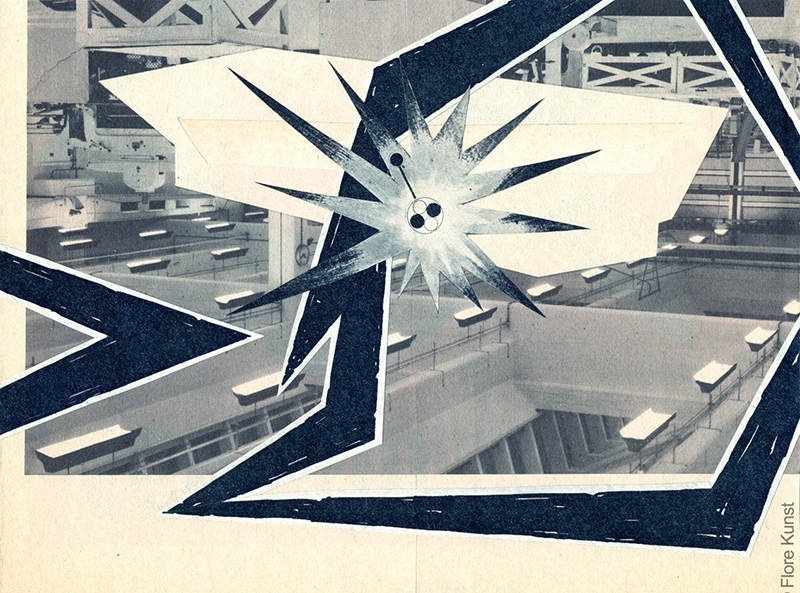
05. Philippe Petit & Friends – Cadential Thrills (11:34)
Michael White: Trumpet, Serge Synthesizer.
Daniel Barbiero: Double Bass.
Philippe Petit: Voice, Processed Kazoo, Synthi A (EMS), Tape Manipulations.
I was listening to an old recording playing my Synthi A and thought it was so electric that I should save it from oblivion. To introduce it I chose to use syllabus while caressing strings… I was craving for a contrabasso and it felt natural to ask Daniel Barbiero to add his spices:
Daniel Barbiero: I followed the architecture of your track and imagined it as a field on which I could set out figures. The first part, over your prepared piano and trumpet, was played pizzicato with space, for a staccato effect. The second part, over the synth, was played arco for a more legato effect. For the second part I used an extended technique (sul ponticello bowing) for much of it in order to harmonize our timbres.
Then I played my kazoo and processed it so that it may sound like a trumpet. Realizing my limits at that game it seemed natural to invite Michael White to play the real instrument:
Michael White: Listening to this track I was mesmerized at the detail, the sounds and the construction of it. It felt very spontaneous yet structured. After trying a few things I decided that my approach would be to do multiple trumpet performances as if “we” were playing a live trio concert, and then moments of my performances could be extracted, edited and manipulated into the finished composition at Philippe’s skillful hand. I employed a few different approaches such as imitation, contrary gestures, complementary gestures and accompaniment while always trying to be spontaneous and not overly calculated. I also wanted to extend the sound pallet of the trumpet while still only initiating sounds from it. To this end I used a mute, processed the trumpet live through my Serge modular and bowed and tapped the trumpet bell. I am honoured to have been asked to be a part of this intercontinental trio with such amazing musicians as Philippe Petit and Daniel Barbiero.
Receiving their additions I mixed’em in and created more space, intervals so that we all be breathin’together… Please join our « cadenza ».
P.S.: To stay in this collaborative spirit I asked my friend Flore Kunst if I could use her art to illustrate.
Originally from Lyon, Flore Kunst has worked in various fields, including illustration, textile design and graphic design. She adopted the medium of collage in 2010 following a visit to an exhibition devoted to John Baldessari, an artist known for his innovative use of popular imagery. In the manner of the Surrealists and Dadaists, the artist enjoys associating often antagonistic universes by assembling photos, images or fragments, seeking to give birth to new ideas, new stories.
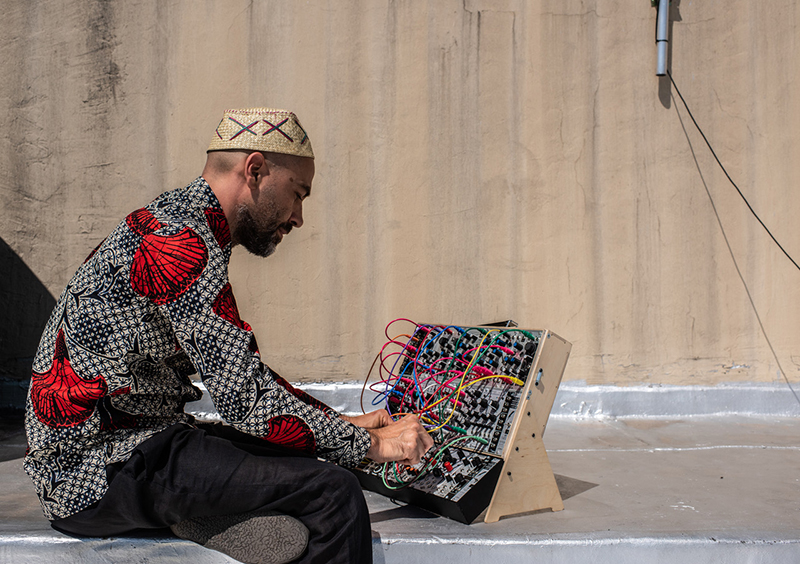
06. Joao Orecchia – To Kick A Stone (09:42)
João Renato Orecchia Zúñiga was born in Brooklyn, NY to Peruvian mother and an Italian father. He grew up in the city’s mixed immigrant communities, in all their contradictory beauty, displacement and unsettledness. With a strong connection to an elusive somewhere else, Orecchia had always been drawn towards unfamiliar territory.
While living in London in the 1990’s, Orecchia picked up the guitar. A born autodidact, he quickly became disillusioned by the common roads of learning the instrument and turned to effects pedals. A new world of sonic manipulation and textural exploration opened up.
Later in Berlin in the early 2000’s, Orecchia played in dozens of bands and began composing for dance, theatre, film and solo releases throughout the Berlin underground of the time. He began to experiment with electronics on borrowed colourful iMacs, while continuing to explore the outer reaches of the sonic capabilities of the guitar.
In 2005, Orecchia relocated to Johannesburg. The city was in a state of extreme flux, alive with possibility and a wide open future. Plugging into the underground music scenes and visual arts scenes, the city provided an endless source of inspiration and wonderful confusion.
Now he lives in Marseille where he has carved a space for himself.
This piece was a commission by Nigerian painter Chibuike Uzoma to accompany his exhibition of the same name in London in 2023. I placed all of the exhibition’s paintings on a timeline and used the resulting video as a graphic score. The sounds include field recordings, archives, records, synthesis, bass clarinet and many combinations of all of those, chosen based on discussions with the artist.
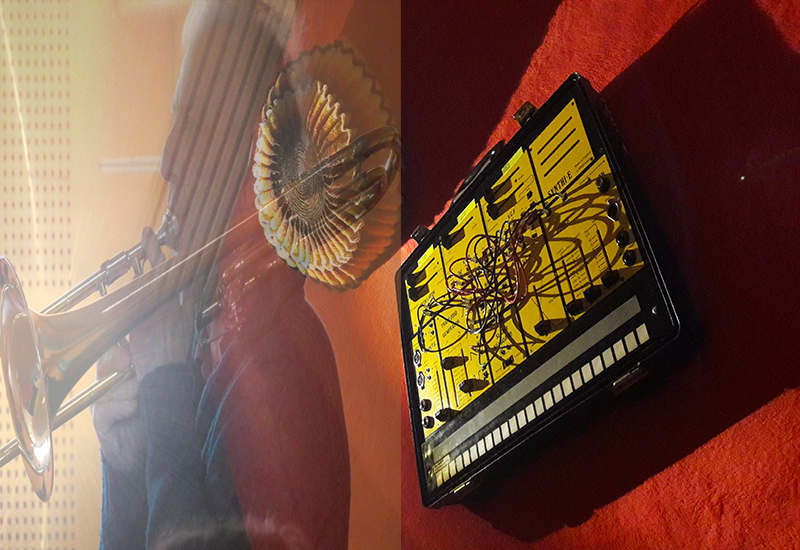
07. Henry Herteman and Julien Palomo – For Burton (suite for synthesizer and trombone) (15:54)
Very pleased to offer a new work with Julien Palomo who had composed our Session #30, a few years ago.
Founder of the label Improvising Beings devoted to improvisation, provoking encounters and, at the same time, paying homage to an underestimated part of the radical musics of the twentieth and twenty-first centuries, especially Free Jazz but not only as Julien is fluently speaking the language of EMS and ARP synthesizers…
Henry Herteman is an agronomist now aged 74. He saw free jazz with his own eyes in the 60s, then life took him elsewhere, and he pioneered organic farming in the early 70s. As retirement approached, he took up the trombone and free jazz around Toulouse. One day he sent a solo trombone album to my label Improvising Beings. I published it 3 months later under the title « Roule ta Salive ». It was very warmly received.
In 2018 we improvised. Henry was on trombone, recorded on two channels: a dry one, at the mic, and via the ARP 2600’s audio input. I played the ARP 2600, and Waldorf Microwave 2, and made live edits to the trombone channel (loops, etc). Some passages are really just trombone and trombone feedback sequenced and filtered.
Still, we were strongly reminded of Joe McPhee’s work in the 70s. For my part, the ones with Jon Snyder, who also worked on 2600. Nevertheless, I played certain parts on Waldorf to get a digital contrast, a sort of “pixelated” background sound, a contrast I appreciate. The 2600 brings color and coherence to the whole.
As for the rest, Henry is one of those true free musicians straight out of the 60s, with no preconceptions about context or instrumentation. We improvised without fixing anything at all, and negotiated the course changes heard in the piece as they were. There are a few tinkerings in post-production, but nothing that alters the physiognomy of the session.
Henri has worked with Burton Greene, and we had in mind to play as a trio. Let’s not forget that Burton was the first to play the Moog 55 in a jazz record, in April ’68, before Sun Ra and Paul Bley. Unfortunately, Burton died before us, and we obviously dedicate this modest essay to him.
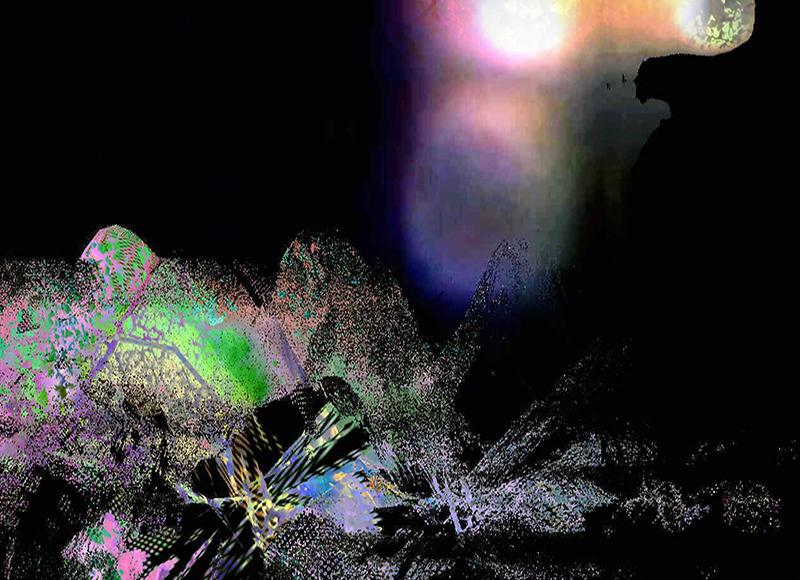
08. Sig Valax – Water & Feather From Green Pulse (07:32)
Sigolène Valax realizes electroacoustic and radio pieces (ARTE Radio), sound creations for live performance. In her improvisations, she looks for frictions, tensions and energies.
She practices a non-idiomatic music that relies on organic drones.
Since 2016 she creates – with the trio Vierge Noire – the music for the choreographer Anna Gaïotti, and is interested in wild lutheries and explores experimental improvised music with Vierge Noire, Elek Ember, Seuil Optique, Sauges, Mesce Basse, and Lucus Furrina.
This composition proposes an introspective journey where aquatic textures, captured by hydrophone, reveal crackles, underwater echoes and murmurs of currents inaudible to the human ear. This aquatic rumor is transformed into an abstract, dreamlike sound language, then interwoven with artificial frequencies using the Buchla Music Easel, creating a resonant space where terrestrial and aquatic dimensions merge.
My approach is based on sound exploration and tactile manipulation; every touch, every pulse on the Music Easel becomes a direct, physical and symbiotic interaction with the instrument, creating an “animistic listening” that is both conscious and intuitive. This dialogue between sound matter and water vibrations creates organic, living sounds that are constantly transforming.
Sculpted sounds become dense, combative matter. Untempered harmonics, treated as uncharted territory, combine with the unpredictable rhythms of the Pulsar module, reinforcing the mystical density of the work. This fluid temporality magnifies every moment as a tangible, sensory experience. « Water & Feather From Green Pulse » unfolds in a series of polyphonic, pulsating moments, offering total immersion in the sound flows.
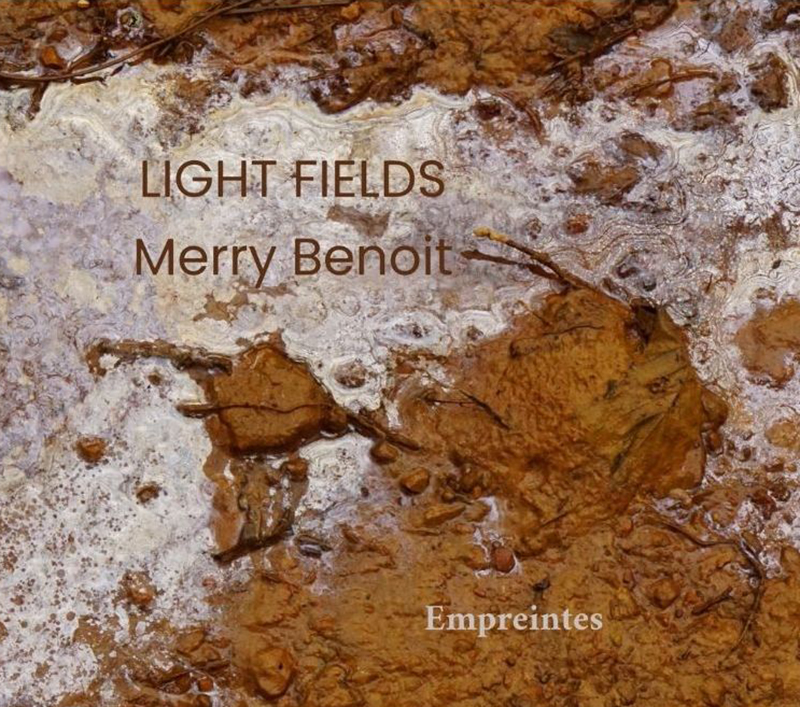
09. Merry Benoit (aka Light Fields) – Empreintes (06:58)
A multi-instrumentalist composer and musician who has been involved in numerous sound creations for theater and contemporary dance companies for over 25 years, as well as in various music groups…
Since 2012, under the name LIGHT FIELDS, Merry Benoit has been composing ambient electronic, cinematic music, sometimes close to musique concrète. He has already released 8 albums, including “Vulnerability” in 2019. His latest, “Des cellules aux étoiles”, released in January 2024, is a sound creation that takes us on a journey from the infinitely small to the infinitely large.
Some of my recent readings have revolved around philosophical, scientific, spiritual and poetic subjects as fascinating as Space, Time and phenomena dealing with the Unconscious.
The world of sequence, sampling and loop is an environment of freedom where I continue to express myself in a non-linear, non-binary way.
These are dear themes in this process, where the essence of my work lies at the heart of the very experience of attention, of being present to what is.
The incessant flow of information, the looped repetition present on all networks, the piling up of data collected in a digital environmental treatment (which extends over the whole planet) are all parallels with a critical observation of today’s society.
In this piece, we can hear a short, free audio extract from a lecture by my former philosophy professor and only French translator of Heidegger, François Fédier, who asks us about our relationship to our own humanity, in the words of Charles Ferdinand Ramuz.
In my home studio, I use all kinds of instruments, both analog and digital, mainly string instruments and percussion, my trusty Soundbox with bow, brush and metal stick, springs of all kinds, etc.. As well as effects pedals (Cosmos Soma for this one), a tape recorder, and analog and modular synthesizers, midi and samplers…).
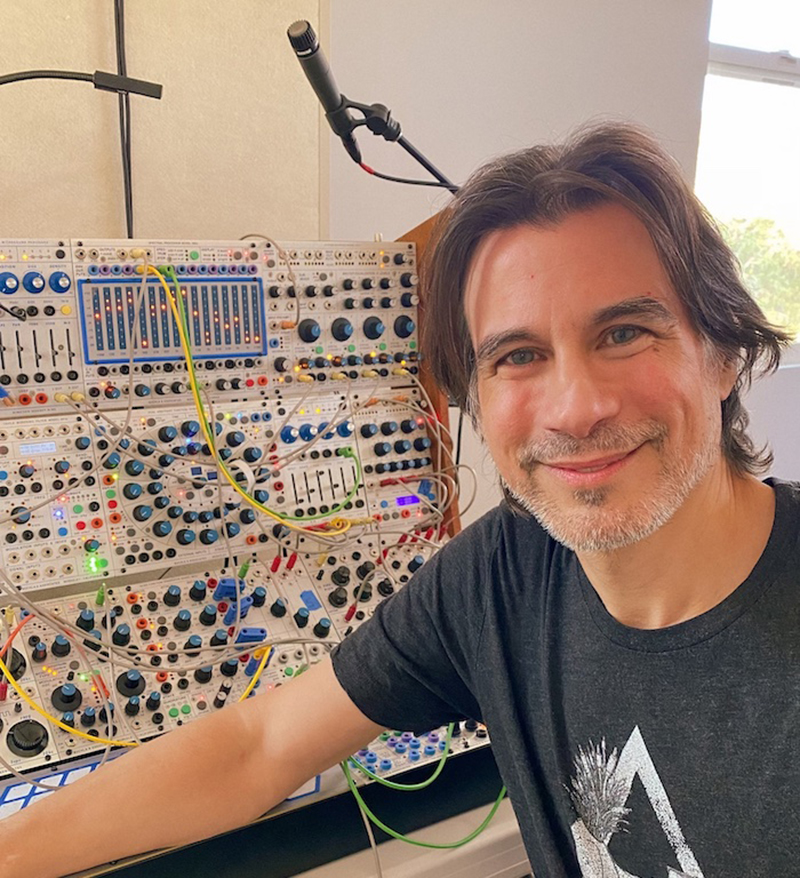
10. Kevin Rix – Early Man (09:46)
Kevin Rix is a film/tv trailer composer who has worked in the industry for two decades with iconic publishers like Audiomachine and Ninja Tracks. His compositions have appeared in trailers for films such as Avatar, How to Train Your Dragon, Robin Hood, Star Wars, Pirates of the Caribbean, Aquaman, Frozen 2, Black Widow, Top Gun Maverick, The King’s Man, Joker, Raya the Last Dragon, Justice League Snyder Cut, Mortal Kombat, Free Guy, Cruella, 007 No Time To Die, Avatar 2, Dune 2, and Deadpool and Wolverine. Much of this music is also available on YouTube and music streaming platforms and has generated over 100 million views. He is also a solo artist releasing albums under his own name and Channel Z200e.
For this piece, I wanted to tell a story about an early human tribe making its treacherous quest across the landscape to find a new home. Except there’s something lurking in the shadows that doesn’t belong to this world, revealing that one of the tribe’s members isn’t human after all. Since the industrial revolution, humanity has been so heavily desensitized by noise pollution that only extreme sonic situations trigger mortal fear. It’s one reason modern humans find silence so eerie–quiet noises in a forest can cause fear and unrest, for example, because we’re used to so many unnatural sounds. But the opposite would be true too; if you were an early man and had only ever heard natural noises, great terror would follow sounds from outside your world. I composed the piece in real time with a small Eurorack setup utilizing Morphagene live vocal performances accompanied by Buchla 200e atmospheres and drones. I started with an improvised voice performance using a mic plugged into the Buchla then patched to the Morphagene then back to the Buchla. I wanted to utilize granular synthesis to break apart the human voice to show that something in the scenario isn’t what it seems. The 200e is always my favorite choice for otherworldly sounds. It’s so natural for the Buchla to sound like some undiscovered world. Just hearing these tones transports me into a different space. Not being a fan of streaming platforms, I much prefer performing on the Buchla for my nightly entertainment. I often practice the Buchla by understanding each module at a time and slowly turning knobs and changing patch points; however, when recording, I never audition my patches. I patch with the power off, then power up the system, hit record, and discover it in real time, allowing the story to unfold. As I’ve composed over 2,000 pieces in my lifetime, it’s become rather natural for me to tell a spontaneous story with sound. Both the vocals and 200e performance were recorded in real time to a single stereo take into Cubase where I mastered the track. I love using voice with the Buchla because I do not tune my system. I think the Buchla 200e sounds much better not tuned, making it easy for me to sing with it. The Buchla can be cumbersome in its patching–extreme changes are slow and quick changes are contained within the existing patch–but the voice is immediate and changes can happen immediately.
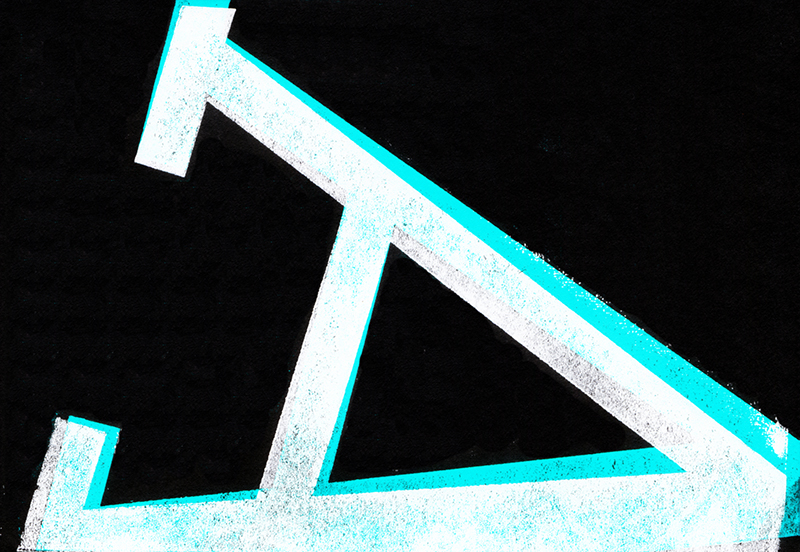
11. Joerg Piringer – Ad Astra (03:34)
Born 1974 and currently living in Vienna, Austria. Member of the nstitute for Transacoustic Research. Member of the Vegetable Orchestra.
Works as a freelance artist and researcher in the fields of electronic music, radio art, sound and visual electronic poetry, interactive collaborative systems, online communities, live performance, sound installation, computer games and video art.
Coming from a live performance poetry context it seems natural to me to use my own voice as the main instrument. There’s the main voice track where i simply say « aaaaaaaaaaaah » (and so on) with some effects. but also some of the percussive elements are made from my voice by using a looper module and some drum-vcas to be able to play them rhythmically.
As so often when i work with modular synthesis i started with a particular idea and it turned out completely different. i planned to use certain modules and create a very complex rhythmically sequenced track. but then i started with the sound that you can hear in the beginning and it went in another direction.
Also i had problems setting up my midi matrix so i started playing the percussion sounds with the arpeggiator of my keyboard. instead of working on intricate sequencing i then improvised the whole piece in one take.
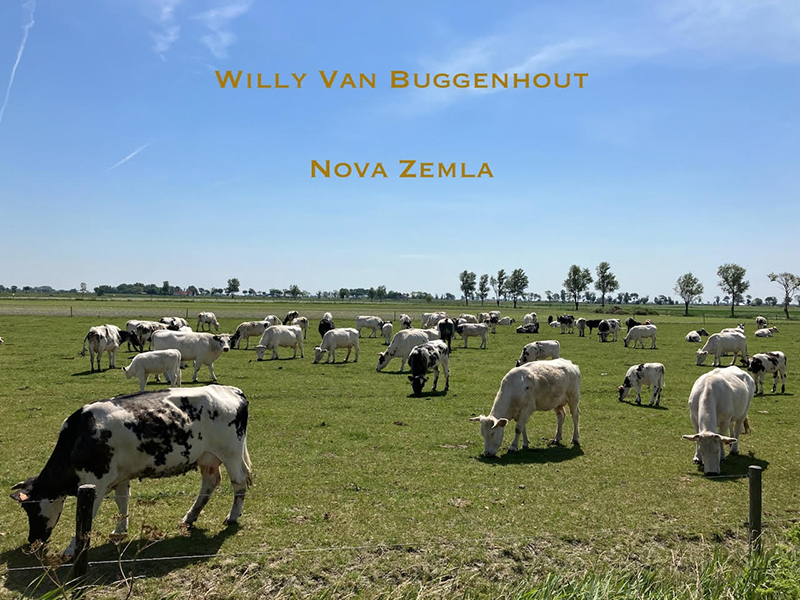
12. Willy Van Buggenhout – Nova Zembla (22:00)
Recorded @ Noordzeestudio – donderdag 18 juli 2024
Willy Van Buggenhout (16/04/1954) studied electronic music in Brussels with André Stordeur (studio Synthèse) and Peter Beyls (Luca). He’s been playing EMS Synthi AKS for nearly half a century and been a member of several group-improvisations, working with many fine musicians and orchestras from all over the World !
I don’t think my music belongs anywhere (And I’d be embarrassed if it sounded like anything else?)
Narrative sound theater – I’d call it?… Just repetitive enough not to scare the listener too much, and always with new surprises.
For this “Nova Zembla” I used acoustic sources from Mini Disc MD and the old studio player. Beside I’m playing on EMS VCS3 Mk 1 (Robin Wood) and an Aks (Vintage Original 1973).
Why? No cables are needed with the EMS – everything stays clearly organized. It has a few clumsy filters (not as perfect as Buchla or Oberheim) but it has a nice “mouthpiece”. Direct changes in the program can easily be made with an EMS, and this has already helped me a lot when improvising.
Improvising is what I’ve been doing for over 50 years now with musicians from all over the world!
They’re always singers or acoustic musicians. I wouldn’t dare list them all for fear of forgetting someone, but they’re all wonderful memories.
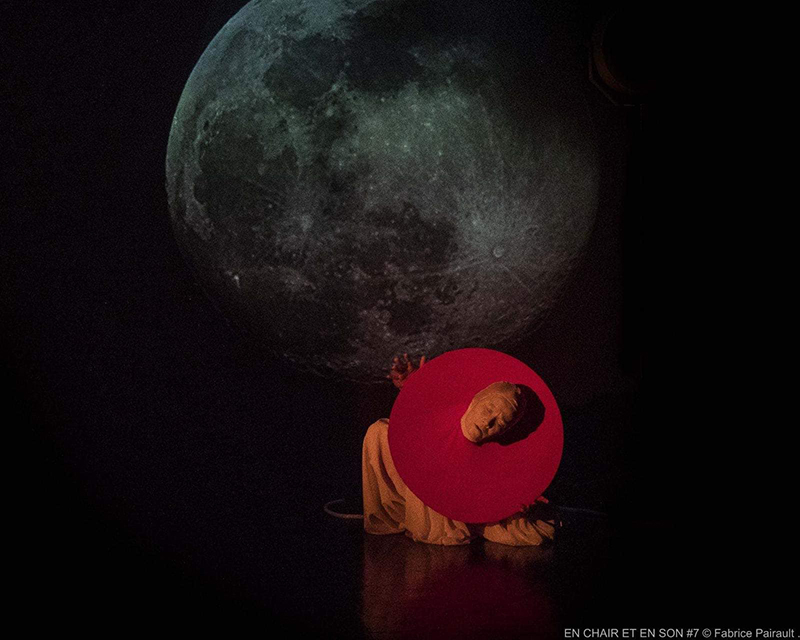
VIDEO BONUS
Mai Nguyen Tri & Philippe Petit – Un ailleurs rassurant
As with each volume, I wanted to end with a video, but as I hadn’t received one for a particular title as with the previous volumes, it seemed appropriate to pay tribute to the “En Chair et en Son” festival (in the flesh and in sound).
This project, born in 2015, introduces a new practice: the originality here is to “give to dance” musical pieces composed for the acousmatic concert. It’s a real challenge for the dancer, who must ‘interact’ with this music: embodying it or, on the contrary, opposing it in order to exist. “Sound reveals flesh, flesh sublimates sound”…
In November 2023 I was invited to play my composition « A Reassuring Elsewhere » on the MOTU Acousmonium while a Japanese Butô dancer – Mai Nguyen Tri who now lives in London – was performing.
